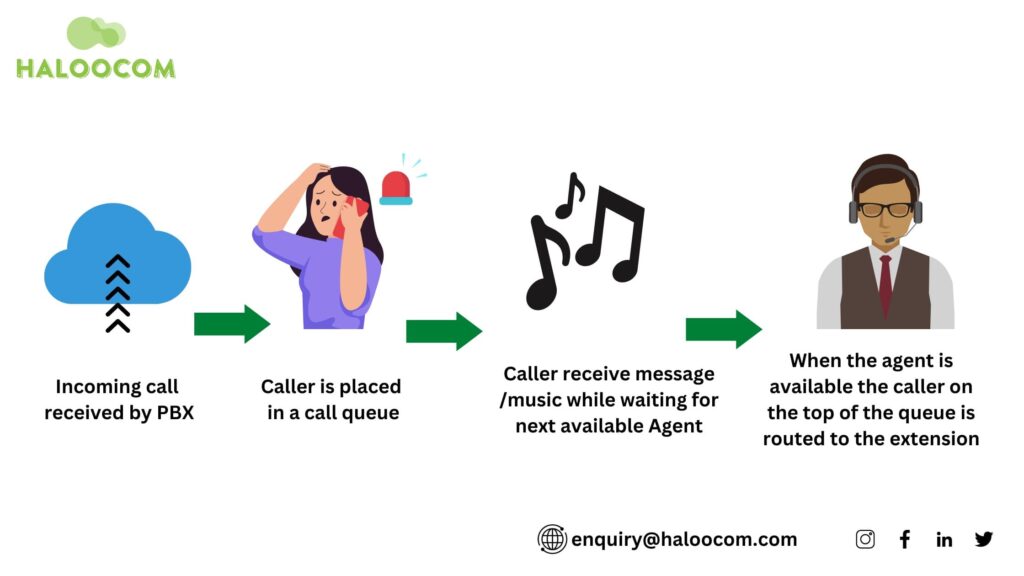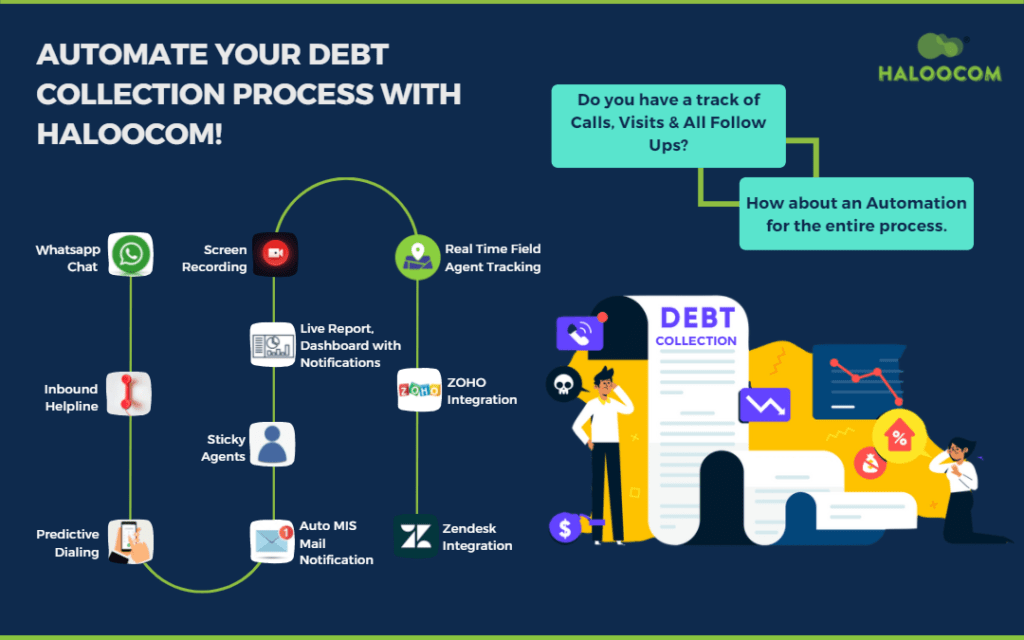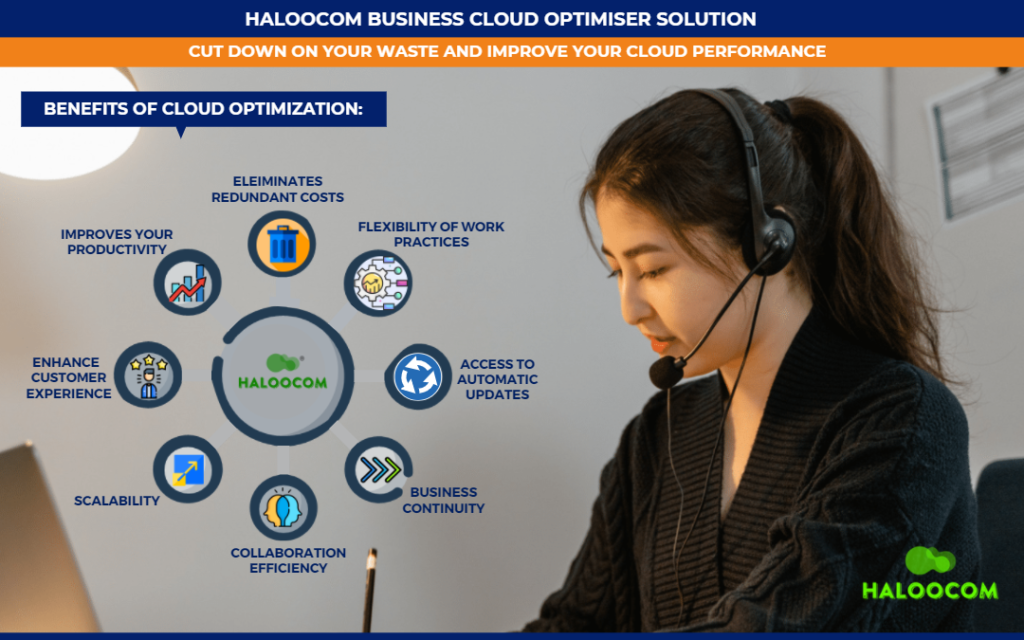Waiting in line can be frustrating, even for something as exciting as a roller coaster ride at an amusement park. So, it’s no surprise that waiting on the phone to speak with a vendor about technical issues or billing errors can only add to the annoyance. However, modern technology offers solutions to enhance customer service experiences and reduce frustration.
Call queuing technology is one such solution available to businesses to ensure their customers have a seamless and satisfactory experience. With call queuing, customers can quickly connect with an agent, improving their overall experience.
In this article, we will dive into the essentials of call queuing – its workings, its effectiveness, and the best practices for efficient management. Whether you’re a business owner or a customer service representative, this information will provide you with a better understanding of call queuing and how it can benefit your organization.
What is “Call queuing”?
Call queuing enables incoming callers to wait virtually in a queue until they can speak with a customer service representative. This system ensures that calls are handled based on the first-come, first-served principle, just like in a physical business setting.
Proper implementation of call queuing technology can result in improved customer satisfaction, agent satisfaction, and decreased call abandonment rates.
How does the call queuing system work in a contact center environment?
The call queue feature in a contact center assigns customers a place in line where they wait on hold, usually listening to music until they can speak with an agent. This feature is generally consistent across systems, but its specifics depend on the technologies used by the business. For instance, some cloud-based contact centers offer an automated callback option, which allows customers to hang up without losing their place in line. When they reach the front of the queue, the phone software will call them back and connect them to an agent.
Many call-queue software solutions use an automated voice message to greet callers and inform them of their position in the queue or the estimated wait time. This gives customers a sense of control and helps them manage their expectations. Without this feature, there’s a 60% chance that customers will abandon the call within 2-5 minutes.
Five Advantages of Implementing Call Queuing for Your Business
The use of call queuing in your contact center can bring numerous benefits, resulting in increased revenue and reduced customer churn. Here are five key benefits:
- Reduced customer wait time: With IVR technology, calls are routed to the most appropriate agent based on factors such as availability, language, and expertise. This leads to a more efficient distribution of calls and can significantly reduce the average handling time.
- Improved customer engagement: Call-queuing software allows you to provide entertainment or education to customers while they wait, such as music files and personalized messages.
- Strengthened brand loyalty: Customers appreciate businesses that value their time and show respect for their call. This can help improve brand loyalty.
- Lowered call abandonment: With call-queuing software, customers can see how long the queue is and be more patient. The automated callback feature allows them to hang up and get called back when it’s their turn, reducing the likelihood of call abandonment.
- Increased customer satisfaction: Call-queuing software often uses intelligent call routing to connect customers to the best agent to handle their inquiries, leading to faster resolution and higher customer satisfaction.
Call queuing is not only crucial for retaining existing customers but also for attracting new ones. If new customer experiences long wait times or are unable to reach an agent, they are likely to take their business elsewhere. By using call-queuing software, you can reduce call abandonment rates and secure new leads.
Maximizing Efficiency with Call Queue Management: 4 Essential Best Practices
To provide a better customer experience and minimize wait times, it is crucial to implement a well-designed call queue system using the appropriate software. Here are four key best practices for effective call queue management:
Providing self-service options to reduce the queue
Offering self-service options to your customers is a powerful way to reduce wait times and streamline your contact center operations. By providing access to automated tools like chatbots and interactive voice response (IVR), you can empower customers to quickly and easily find answers to their questions, freeing up valuable resources for those with more complex needs.
By adopting an omnichannel approach, you can ensure that your customers have access to the information they need, when they need it, and can experience a more seamless and efficient interaction with your organization. This not only improves the customer experience but also helps to keep wait times to a minimum and optimize your contact center operations.
Set up automated callbacks
Setting up automated callbacks is another effective way to reduce wait times and improve the customer experience. With this feature, customers can opt to receive a call back from a representative instead of waiting on hold. The system will automatically call the customer back in the order that they were received, freeing them up to continue with their day while they wait for their call.
This approach has several benefits. Firstly, it allows customers to avoid the frustration of waiting on hold, which can significantly impact their overall satisfaction with your brand. Secondly, it helps to manage the flow of incoming calls, reducing the wait time for other customers who are waiting to speak to a representative. And finally, it enables your contact center to operate more efficiently, freeing up resources to handle more complex issues and improving the overall customer experience.
By implementing automated callbacks, you can improve the customer experience and reduce wait times, demonstrating your commitment to delivering a seamless and efficient service.
Always Use IVR
Interactive Voice Response (IVR) systems are a crucial component of many contact center solutions and are designed to enhance the customer experience by providing quick and convenient access to information. Upon answering an inbound call, the IVR greets the customer with an automated voice message, allowing them to select from a list of options to be directed to the appropriate department, team, or skill group.
With the IVR system, simple inquiries such as business hours can be immediately addressed, reducing the wait time for the customer and streamlining the overall call flow. This allows the contact center to operate more efficiently and effectively, providing customers with the information they need while freeing up resources to handle more complex issues.
Always Minimize customers’ hold time
Providing fast and efficient customer service is a top priority for most organizations. With 90% of customers placing high importance on an immediate response to their questions, it’s crucial to find ways to reduce hold times and improve agent productivity.
One effective solution is to adopt a cloud contact center platform that integrates powerful tools to support your agents in delivering an exceptional customer experience. These tools can include calling whispering, which provides background information to the agent before the call is connected, a unified agent dashboard that provides a comprehensive view of the customer’s information and history, call scripting to guide the agent through complex interactions, and conversation analytics to monitor and evaluate performance.
By giving your agents access to these tools, you can empower them to handle customer inquiries more effectively, reducing wait times and improving the overall customer experience. In today’s competitive landscape, providing fast and reliable customer service is critical to building customer loyalty and differentiating your brand.
Conclusion
In conclusion, reducing wait times in a contact center is essential for providing an exceptional customer experience. Call queuing is a proven and effective way to manage incoming calls and minimize wait times. However, it’s only one piece of the puzzle.
By incorporating other tools such as Interactive Voice Response (IVR) systems, automated callbacks, and agent productivity tools, you can create a more streamlined and efficient contact center that delivers fast and reliable service to your customers.
If you’re in the market for a cloud contact center platform that offers these features and more, consider Haloocom, a user-friendly solution that can help you improve your call-handling times and provide your customers with the service they deserve.






